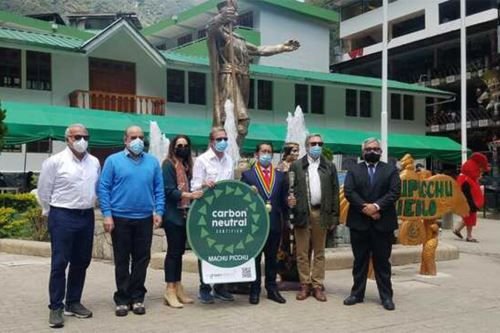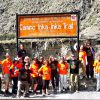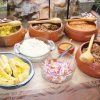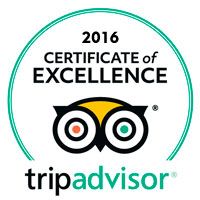4-day Inca Trail Tour Frequently Asked Questions
4-day Inca Trail Tours Frequently Asked Questions
Who controls the permits and availability of the Inca Trail?
The Inca Trail’s availability depends on the organization that manages the trail and not on Inca Trail Tour Operators. Thus you may contact all tour operators you like, and they will all give you the exact dates. So if your particular date is not available, switching to any other traveling company will not be of help.
The Culture Ministry manages the Inca Trail, so they control the permits and availability of the Inca Trail.
The maximum number of people allowed on the Inca Trail is 500 per day, includes guides, porters and cooks, 40% of the space can be availed by regular trekkers, whereas the remaining 60% is only for the Trek personnel.
The available spaces that have been given on this page correspond to this percentage. The regulations also state that bookings are valid only for the current season, from March to January. For the next season, you cannot make any bookings until the current season expires.
Suppose you fail in utilizing your Inca Trail permit due to any reason. In that case, you can try out any other alternative treks in the regions of Lares trek, Huchuy Qosqo trek, Salkantay trek, Quarry trek, and others Machu Picchu Hiking Tours, all of which pass through Machu Picchu as well. You can view our Machu Picchu Hiking Tours page for more details, and suiting your needs, choose the best package of the several available options.
To have more information about our tours, see the most famous Inca Trail Tours for a detailed description of treks.

Can I climb the Huayna Picchu Mountain (300m – 985 feet)?
You can include a hike up the Huayna Picchu Mountain, but please consider the new regulations that have been enforced since July of the year 2011. The policies require you to purchase a permit in advance. If you were just going to Machu Picchu and not to the Inca Trail, you could have bought the package rated at US$ 60 that covers both Machu Picchu and Huayna Picchu Mountain. However, even though the Machu Picchu entrance fee is covered with the Inca Trail permit, the Huayna Picchu permit is not included in the US$ 100 package.
Just like the Inca Trail, the trekkers on the Huayna Picchu peak are also limited to 400. For the morning sessions at 7 am, and 10 am, this number is reduced to 200. The tour guide will organize a trip on Huayna Picchu for anyone who has a permit.
Please remember that your permit contains your name and passport number, so it is not transferable, and the amount will also not be refunded.
Maybe you are interested in knowing about what places to visit in the citadel of Machu Picchu; you can read our blog about What most people lose when visiting Machu Picchu?

Why traveling with Sun Gate Tours is recommended?
Sun Gate Tours is a licensed tour operator that follows Peruvian Law. We are working hard to change the tourism concept in Peru and have defined it as our aim.
Do bookings have to be made in advance? If so, how many days ahead should I submit my application?
You should make your bookings for the Inca trail well in advance and even pay your entrance fee in advance so that you can be assured space on the route.
Since the allowed number of people is not that high, we recommend you to make your bookings in advance as much as possible so that you can be guaranteed space on the trail on your particular dates. If the season is at a peak, your bookings should be made at least 5 to six months before your preferred dates.
Depending on the months, here is how soon you should make your bookings in advance.
Mar – 5 to 9 weeks
April – 9 to 12 weeks
May – 4 to 5 months
Jun – Aug – 5 to 6 months
Sept – 4 to 5 months
Oct to Nov – 9 to 12 weeks
Dec to Jan – 5 to 9 weeks
Feb – the trek is shut off for maintenance
Can I go to the Inca trail without a tour operator?
You cannot go to the Inca trail until you sign up with a tour operator because the policies published in June 2002 do not allow it. The guidelines clearly state that every trekker must be a professional guide. So if you are on your own, you would not even be allowed to begin the trek.
The Culture Ministry is the organization whose responsibility is to manage the Inca Trail and Machu Picchu. According to their policies, as a company, we must provide you with a trained guide, camping equipment, emergency kit aid, emergency oxygen, and radio communications. These are mandatory requirements for every travel agency, so we must abide by them.
Which campsites do you use?
Campsites are subject to change based on crowds and season. We generally try to camp in less-traveled areas so that visitors can enjoy the natural beauty of the Inca trail while minimizing environmental impact. Our usual camping locations include Huayllabamba, Paqaymayo and Wiay Wayna, and Phuyupatamarca.
What camping equipment does Sun Gate Tours provide us?
We supply 4 season sleeping tents, dining tents, tables, chairs, toilet tents, cooking equipment, water purifiers, Therm-a-rest inflatable sleeping pads, and other camping equipment. Our outfitter purchases the highest quality equipment, and older equipment is evaluated and replaced regularly. The sleeping bag does not include.
Can I take children on to the Inca Trail trek? Would you recommend it?
Children are allowed on the Inca Trail tour. We have taken plenty of family groups onto the trail that had children older than seven years. If your child’s age is lesser, please do not take him onto the route. Please remember that the children we brought onto the trek are physically apt for it with high fitness levels and are used to prolonged walking and hiking.
If you plan to bring your kids with you, we would suggest a private tour instead of a group visit to enjoy extra attention from the guide, which your child will need. Please remember that the trek is already tricky, and bringing a child adds even more to it. If you have never hiked before to high altitudes, please think thoroughly before making a decision.
You should also be aware that they are still minimal though emergency services are available on the trek.
Must I have a certain fitness level?
Your fitness level should be good if you want to hike the Inca Trail. You do not have to be a pro, but you should have some idea of what it will be like, and use it in preparing for your trip.
To stay healthy throughout the trip, we suggest that you acclimatize in Cusco before beginning the trial. Cusco is situated at 3,350m/10900f, and we recommend that you stay there for at least 2 or 3 days.
The following tips can help you in acclimatization.
When you get to Cusco, rest, try to sleep.
Avoid agitation and strenuous exercise upon arrival in Cusco.
Never over-exert yourself primarily upon your arrival.
Consume lots of water and other drinks, such as coca tea.
Avoid smoking and drinking alcohol.
Do not take any sleeping pills.
What do I have to take to the Inca Trail?
Trekkers only need to bring their items and a daypack. We will offer you with a duffle bag for your possessions on the Inca path, so you won’t need to bring a huge backpack unless you want to. It is advised to bring proper sun protection, layers of comfortable trekking clothing, a sleeping bag, trekking poles, insect repellent, hiking shoes, a torch, a camera, and 1-2 refillable water bottles.
During the wet season, rain gear is also recommended. (November-April), and cold weather gear (warm jacket, thermals, hat, and gloves) is recommended during the dry season (especially June-August).
What happens if I change my passport number?
The authorities will only let us update our passport numbers if we copy both the new and old passports. If you no longer have your previous ID, any government issued ID with the same name will suffice. Also, be certain that your passport does not expire within six months of your trip. For more information, see our blog post FAQ – New Inca Trail Passport Number.
What is the height of the Inca Trail? Do many people experience altitude sickness?
We can never predict if the immense altitude is going to affect you or not. Your ability to bear greater heights depends more on your genes than how physically fit or healthy you are. As long as you acclimatize correctly, you will probably not have any problems.
Spending an entire day in Cusco, taking things lightly, and drinking water aplenty should be enough in most cases and will help you complete the trial. However, our recommendation is to stay around 2 or 3 days in Cusco because it is high, and you can do many exciting activities there. Cusco is situated at 3340m or 10988ft, and sleeping at this altitude for two nights helps and makes your ascent on the Inca Trail easier, the highest point of which is 4200m or 13818ft.
Why is sending a deposit necessary?
We require a full booking form with all data for the entire party on one piece of paper, as well as a US$ 300 deposit per participant, so long as we have a single booking form that we can utilize to track payments. We will schedule your permits after we have received your money and personal information. When your tickets arrive, we will email you an invoice and confirmation that everything is in order. Once confirmed, all start dates are guaranteed.
Can I hire an extra porter?
We treat our porters well and provide them with all that they need. We have given them a uniform, trekking shoes, ponchos, backpacks, and also food. They are allowed to carry a weight of 14 kg, but since we believe in porter welfare, we request our clients to burden them with 7 kg only. We also provide them with overnight living a day before the trial to get a good night’s sleep.
What if I trek slowly and may take time while at it?
No matter how slow you trek, you will reach the campsite before night, so that is not an issue. Our guides will tell you about the time and distance of the walk day by day.
If you are trekking in a group of 9 and more people, there will always be two guides to accompany you. The head guide will go in front of the group, and the assistant guide treks with the last person in the group. If your group is of 8 or fewer people, there will only be one guide. He will then trek with the last person on the trail.
After I have made my booking, is it possible to change the departure date?
When your booking is confirmed, you cannot change the departure date because the Ministry of Culture approves them, so it will not be possible for you to change the date or delay your trip. All you can do is make a new reservation in your name, but you will have to submit the deposit again. Please note that dates for this reservation cannot be within five days of your previous due date or five days after it.
Are there any toilet facilities along the Inca Trail?
There are toilet facilities along the Inca Trail. We suggest all our clients use only them and not pollute nature. Make sure you have toilet paper with you because it is not available in the provided loos.
How many individuals are in a tent?
Our tents can hold four individuals, but we only assign a tent to two people since we care about our clients, make your stay more comfortable, and have ample space for all your needs.
Suppose I fall ill on the trek. What would happen if I wanted to go back?
If you book with us, there are minimum chances that you will need to go back. We want you to complete the trail and enjoy it along the way. If there is a medical emergency, our guides are trained to handle it and carry the required medical equipment.
Still, if your health does not allow you to complete the trek, we will do everything we can to get you to the nearest town or village. If your health problem is due to altitude, we will provide you with an extra oxygen tank with us on the trek. If it is something serious, a helicopter can always pick you up, provided you have travel insurance. In any event, if you drop out in the middle of the trek, we will not return your money.
In general, cases, if you feel like quitting on day two or before, you can travel back to Ollantaytambo with a guide or porter, depending on the severity of your condition. If you can recover in this area overnight, you will be allowed to go to Aguas Calientes via train the next day. You can stay there until you can rejoin your group in Machu Picchu, after which you will be able to continue the rest of the tour with them.
Please keep in mind that you will have to pay the additional costs incurred in this case, such as the train tickets and accommodation. The average rates are around US$ 80 to 120. You can claim this money later onwards with your insurance company through the document we will provide you.
What food will I get along the trail?
Food is not an issue on the Inca trail. We have trained cooks who will provide you with a large variety of dishes. Either all of the items listed below will be available or a selection of these.
Breakfast: porridge, pancakes, scrambled eggs, bread, and jam. Beverages are also provided, such as coffee, hot chocolate, English tea, and herbal teas such as coca tea or chamomile tea.
Lunch and Dinner: soup, main course, dessert, and herbal drink. The main course can be anything from beef, fish, and chicken, accompanied by pasta or rice.
Snacks: Every day you finish the trek, we will give you bread and jam, popcorn, chocolate, biscuits, and hot drinks. The snacks are provided according to our cooks’ decisions, but you can always buy your items if you want.
Can your agency fulfill my dietary needs? If so, what food will I be provided?
Sun Gate Tours can accommodate dietary needs of several types, provided you inform us of this at the time of your booking. Whether you are a vegetarian, are allergic to specific food items, and cannot eat gluten, we will still be able to help you. The chefs are well-trained and make delicious meals while making every effort to meet your specific requirements. All meals are given as a buffet, so you can select whatever you like. Timings will be communicated to you by your tour guides.
Will you provide drinking water?
We provide drinking water on all our tours. Our cooks boil the water for around ten minutes. You can fill up your supplies with this water whenever you need it. The only exception is on Day 1 until lunchtime. After this, you will be given whatever whenever you want for the rest of the trip.
For your information, there are spots along the trail where you can buy bottled water. However, these locations are not specific, so you may have to rely on our supply.
What guidelines do you follow concerning tipping?
The porter tipping ceremony will take place on the third night of the tour at the Wiñay Huayna campground. Tipping is not mandatory but is an act of gratitude for the porters, cooks, and guides who help you out along the trek.
The average rates given below are per person and per group.
Porter: 60 to 80 soles
Cook: 80 to 100 soles
Guide: 160 to 200 soles
Where can I store luggage that I will not need on the trail?
You can leave your extra bags at your Cusco hotel, or you can leave it in our luggage storage. We can also keep your luggage without any charges.
Please note that do not burden yourselves with extra bags while on the Inca trail trek. Only carry the things that you do need and leave the rest in Cusco.
Is the Inca Trail open all year round?
It is not open all year, it is closed in February for maintenance and conservation.
When do rains hit the region?
The rain season starts sometime in October or November and lasts till April. The rains in Cusco do not mean the heavy monsoon downpours. Generally, rainfall is only occasionally in small short bursts, which you will grow to love. The rest of the time, the days can be hot as well and not necessarily cloudy.
Since rain is light, even during this time, the trail is very safe. Many people prefer to go at this time of the year because the course is less crowded. So if you are in for rain, your booking should be of this time, but you will have to wear waterproof boots and carry rain gear with you.
What are the general weather and average temperatures on the trek?
The rainy season starts in November and lasts around April or May. Generally, the rain is light and is enjoyable. In February, downpours can be heavy, but that is when the trail is closed. The temperatures range from 2 to 25 degrees Celsius.
The dry season lasts from May till June. The days are sunny, and the sky is blue. However, the nights can be colder. On the day, temperatures lie between 20 to 20 Celsius, but at night, this can reduce to 0 to -5 degrees.
On the trek, we recommend that you dress in layers. You can take them off when you feel warm, and you can don them again when it gets cold.
The best months to make the Inca Trail are from May to September, when the conditions are pretty dry and generally sunny. However, June, July, and August can also be very cold at night so bring a good quality 4 season sleeping bag.
Is it possible to hire a sleeping bag if I do not have one?
Yes, you can rent a sleeping bag when you arrive in Cusco, the following rates apply.
Sleeping bag: US$ 20
Trekking poles: US$ 20
Do I need to use trekking poles?
We highly recommend you use trekking poles, particularly if you suffer from knee and joint problems. Several times, these will come in extremely handy, whether you are climbing up or coming down. Walking poles help you maintain your balance and reduce the pressure on your knees.
Both the Culture Ministry and Sun Gate Tours request you to use only those trekking poles with a nonmetallic tip to prevent the trail from damaging. If you have these, you can fix rubber soles at the ends, which you will find at any camping shop.
What is the weight of the sleeping bag and mat?
Weight of the sleeping mat: 1 kg
Weight of the sleeping bag: 2kg to 2.25kg
If I am alone, is it necessary to share the tent?
In general circumstances, you will have to share your tent with someone of your gender. If you are not comfortable with this, you can pay for a single tent for US$ 20.
Do I need to carry money?
You should carry some money to help you avail bottled water, hot showers (only for the third night), hot springs, souvenirs, and snacks. You will also need money to tip our trekking staff.
In most cases, around 300 soles are enough for the trip.
How are the guides?
Our Sun Gate Tours is among the very best and most experienced guides anywhere. They are from the surrounding Cusco and Sacred Valley area and speak fluent English and Spanish and the native language of Quechua. All of our tour guides have received training in tourism, medical emergencies, and first aid. They all have 5 to 12 years of experience leading Inca route treks and are knowledgeable about the area’s history, spirituality, culture, and ecology. See testimonials from our happy travelers.
Will I need an extra porter?
If you have never trekked before, we highly recommend an extra porter. If you do not do this, you will have to carry your sleeping bag, mattress, backpack, and water bottles. Almost 75% of our clients avail the extra porter feature to ease their trip.
Even if you appoint a porter, you will still need to carry a day pack to store items like a water bottle, camera, sunglasses, sunscreen, a warm upper, a poncho, or anything else you may need while hiking. Also, be sure to keep eatables like energy bards, nuts, sweets, dried fruits, chocolate, and anything else with vast quantities of glucose to help you with the altitude. The porter will not walk beside you, so you will only have access to your bag with him during breaks.
Before the trek begins, we also give you a porter bag to store your essential belongings. You can hire a porter for US$ 150, which provides you with a maximum limit of 14 kg. If your storage is more than this, you will have to pay additional fines. Would you please take what you need and leave the rest in Cusco?
If I want a porter, when should I let you know?
You will have to inform us in advance if you need a porter because when we buy a permit for ourselves, we also have to obtain a license for the porter. Thus, if you are late in letting us know, we will not be able to arrange a porter for you.
How challenging is the hike?
The total distance walked during the four-day trail trip is 43 km – 26 miles, therefore the lengths traveled each day are not increased. Because of the altitude, trekking these distances might feel nearly twice as difficult as walking the same distance at sea level.
Day 1 – Transfer to Km 82, Hike to Huayllabamba
Approximate walking distance: 12 km (7,47 miles) – Estimated time walking: 5-6 hours
Day 2 – From Huayllabamba to Paqaymayu (Crossing the highest point 4,200m – 13,776ft)
Approximate walking distance: 11 km (6,84 miles) – Estimated time walking: 6-7 hours
Day 3 – Paqaymayu to Wiñayhuayna (Descending into the Cloud Forest)
Approximate walking distance: 16 km (9,94 miles) – Estimated time walking: 7-8 hours
Day 4 – Hike to Sun Gate, Visit Machu Picchu Sanctuary
Approximate walking distance: 4 km (2,49 miles) – Estimated time walking: 2 hours
Will I get to view sunrise?
The sunrise in the region is distinct from the normal morning panoramas seen in the skies at dawn. If there is not much mist and the clouds are high, you might be able to witness the first ray in the sky. In truth, at this time, the sun has already risen and is not just passing over the high mountainous regions.
How long does it take to see Machu Picchu? When does the group proceed to Aguas Calientes?
The visit to Machu Picchu is of almost two or three hours. During this, a guide provides you with details on the ruins. When this session is over, you can spend an additional two hours or so exploring the ruins. You can also ascent the Huayna Picchu peak if you have the permit.
If you want, you can also leave for Aguas Calientes right after the guided session is over.
When will I reach Cusco?
In general, you would reach Cusco at around 9 pm. You have to book domestic flight tickets for the next day.
What benefits can I avail myself of in a private trek?
The Inca Trail private tour gives you the advantage of availing of any date as long as the trek is available and you can acquire a permit. We have regular departures, and you can go with anyone you like.
If you avail of private tours, you can enjoy a very personal experience. We would provide you pick and drop facility from your hotel. The guide will focus on you, and you will not have to follow a fixed food menu.
How can an ISIC card give me a discount?
The International Student Identity Card or ISIC is an international recognition that you are a student. If you have this card, the Culture Ministry will provide you with a discount of US$ 35.
We will need a scanned copy of your card at the time of buying permits. If you did not send this initially, please let us know and do it at your earliest convenience.
Sun Gate Tours offers this tour by request. Depends on your customize travel we can do scheduled it with the best options that we have to offer you. Just contact us by email or whatsaap number and we glad to help you anytime!.
Here you have the information:
Email: hello@sungatetours.com
Whatsaap number: +51 901 994 670
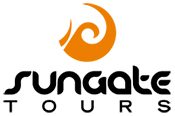



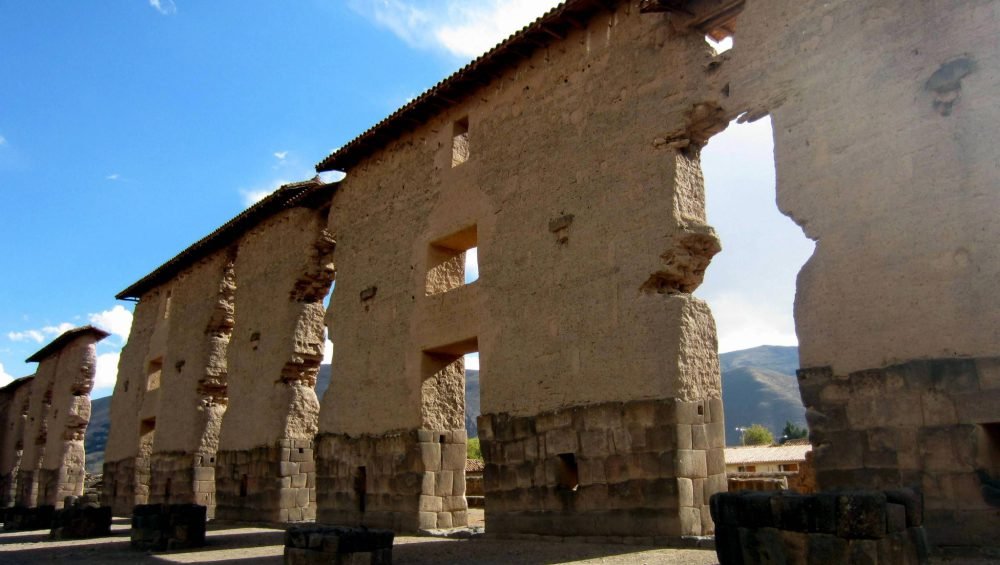
 The building so named is the only one of its kind within the “Kallancas” genre. Externally it is 25.25 meters wide by 92 meters long and at least 15 meters high. The central wall is the tallest and currently, its maximum height is 12 meters, but towards the end of the 19th century, the traveler.
The building so named is the only one of its kind within the “Kallancas” genre. Externally it is 25.25 meters wide by 92 meters long and at least 15 meters high. The central wall is the tallest and currently, its maximum height is 12 meters, but towards the end of the 19th century, the traveler. It houses approximately ten rows of twenty circular structures – collcas – each one well-aligned with slight differences in diameter, ranging between 7 and 10 meters. All very deteriorated and with large areas destroyed for agricultural use due to of which the stones that illegal to cover low walls have been piled up since it has a level ground.
It houses approximately ten rows of twenty circular structures – collcas – each one well-aligned with slight differences in diameter, ranging between 7 and 10 meters. All very deteriorated and with large areas destroyed for agricultural use due to of which the stones that illegal to cover low walls have been piled up since it has a level ground.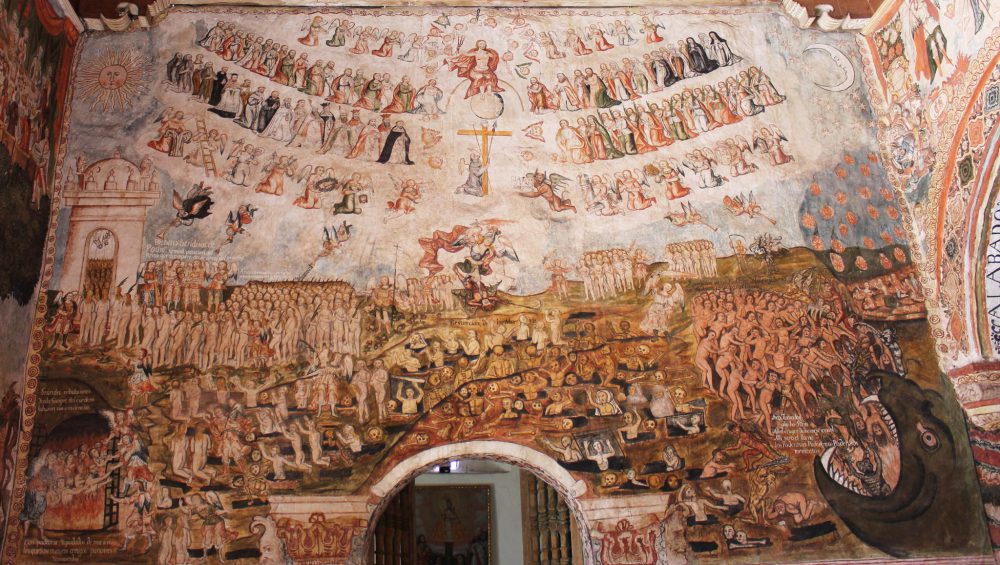
 In front of a wide atrium that is accessed through three carved stone steps, is the main entrance to the temple, which is descended by two slopes and a carved stone landing. The main portal leads to the first space or basement. To the right of this, there is a staircase with three stone steps and the rest of the rammed earth that leads us to the choir.
In front of a wide atrium that is accessed through three carved stone steps, is the main entrance to the temple, which is descended by two slopes and a carved stone landing. The main portal leads to the first space or basement. To the right of this, there is a staircase with three stone steps and the rest of the rammed earth that leads us to the choir. It constitutes one of the first forms of artistic expression of man. Used since pre-Hispanic times. In Hispanic times, during the 17th to 19th centuries, Huaro received different artistic influences from both the European schools and the indigenous influence. Since the arrival of the Spanish to the territory of the Incas, Hispanic and indigenous techniques were mixed in the execution of works of art.
It constitutes one of the first forms of artistic expression of man. Used since pre-Hispanic times. In Hispanic times, during the 17th to 19th centuries, Huaro received different artistic influences from both the European schools and the indigenous influence. Since the arrival of the Spanish to the territory of the Incas, Hispanic and indigenous techniques were mixed in the execution of works of art.
 Qeshuachaca Tour is located at 180 km from Cusco City and it was built more than 500 years ago.
Qeshuachaca Tour is located at 180 km from Cusco City and it was built more than 500 years ago.





